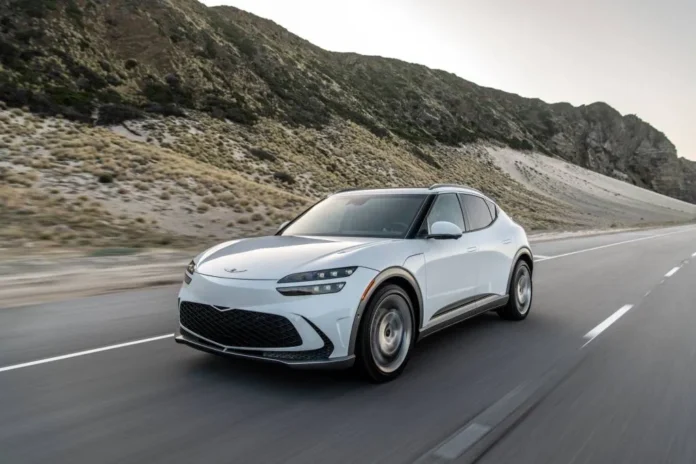Leah Stokes and Adrian Deveny helped craft the Inflation Reduction Act, the most consequential climate law in U.S. history. Now they’re planning how to keep it alive through the next four years of a Donald Trump administration.
That plan starts with pushing through as much climate funding and regulation as possible in the waning days of the Biden administration and fighting attempts from a hostile Trump administration to claw that progress back after Inauguration Day.
It continues with pushing federal, state, and local policymakers to ensure the clean energy projects and factories financed by the law’s hundreds of billions of dollars of tax credits create jobs in Republican-controlled states and districts. Those jobs must make a difference in people’s lives to give them a personal stake in fighting for the energy transition — and to give their lawmakers an incentive to protect the climate law making them possible.
And unfortunately, the plan will require coping with “some really devastating losses in that fight in the next four years,” said Stokes, a professor and climate policy expert at the University of California, Santa Barbara, who worked with groups such as Rewiring America to help craft key energy provisions of the law.
“I am not 100 percent doom and gloom,” she said during a Thursday event hosted by The 2035 Initiative, the university-affiliated think tank she helped launch two years ago. But then, she conceded, she’s an optimist — “I thought Kamala Harris was going to win.”
Deveny, founder of policy advisory firm Climate Vision and former director of energy and environmental policy for U.S. Senate Democratic Leader Chuck Schumer (N.Y.), admitted that he’s “less optimistically predisposed.”
That’s largely based on his 13 years working on climate issues in Congress, the first 10 of which yielded no progress on federal climate legislation. But the patience and preparation paid off with a raft of achievements during the Biden administration — the bipartisan infrastructure law in 2021 and the IRA and CHIPS and Science Act in 2022.
“The Biden administration has had some incredible successes,” Deveny said, not just in terms of investment in clean energy projects and manufacturing facilities, but also in booming employment in the clean energy sector. The U.S. Department of Energy reported in August that clean energy employment increased by 142,000 jobs in 2023, growing twice as fast as the U.S. economy overall.
Still, even the laws on the books are not sufficient to bring the U.S. in line with the Biden administration’s climate commitments, including halving greenhouse gas emissions from 2005 levels by 2030 and shifting to carbon-free electricity by 2035. “We would have had to have passed another IRA-sized bill next year to be on track to meet our 2030 goals,” he said. “To be on track to meet our 2035 goals, we would have had to pass a bill two to three times the size of the IRA next year.”
But “the truth about climate is that doing nothing is not an option, and every ton reduced is a future that’s a little less bad,” Deveny said. “And so we always have to fight to eke out every ton that we can.”
Here’s how Stokes and Deveny think advocates can keep climate progress moving in the right direction in the years to come.
From Biden to Trump 2.0
Between now and January 20, when Trump will be sworn in for his second term, the directive is clear: Lock in as much of the Biden administration’s clean energy agenda as possible.
Over the last few years, the federal funding created by the IRA and other major bills has not flowed as quickly as its backers had hoped. That’s because the federal government moves slowly, Deveny said.
“They have already been working at lightning speed for federal agencies — which is not really lightning speed — but they’re moving as fast as they can,” he said.
But with Trump pledging to claw back any unspent funds from the IRA, “getting that money out the door is critical, because any unspent money is at risk of not ever getting spent,” Deveny said.
That rush is already underway. In the past few months, the pace of federal funding announcements has accelerated, with DOE grid-modernization grants and loans for distributed solar and clean fuels manufacturing, U.S. Department of Agriculture grants for rural electric cooperatives, and financing from the Environmental Protection Agency’s “green bank” program for community solar, electric trucking, electric school buses, and building efficiency. Two days after the election, the DOE’s Loan Programs Office finalized a $475 million loan for a battery recycling facility. More can be expected between now and Inauguration Day.
Federal agencies are also finalizing rules and regulations at a breakneck pace, Stokes said. “There are civil servants working in the IRS, in the White House, and the DOE and EPA who have already been working very long hours for months and years, and that’s only going to ratchet up.”
The goal of that work is to cement the legal standing of key Biden administration policies, including EPA rules limiting methane flaring and leaks from oil and gas operations, restricting carbon emissions from fossil-fueled power plants, and setting emissions standards for light-duty and heavy-duty vehicles.
“Regulations can’t just be thrown out,” Stokes said. The last Trump administration’s efforts to undo Obama administration climate and energy policies ran into a buzzsaw of legal and administrative challenges.
“There are just a ton of organizations with exceptional lawyers who have an incredible track record of success catching any sloppiness” in drafting regulations, Deveny said.
To be clear, a second Trump administration may choose to violate legal and administrative guidelines and statutory obligations, Stokes warned. “When we start thinking about anti-democratic institutions, we have to start thinking about coloring outside of the lines.”
Leaning into the Inflation Reduction Act’s non-climate benefits
It’s not yet clear whether Republicans will retain a majority in the House of Representatives, and if they do, by what margin. If they end up controlling both houses of Congress, the industrial-policy theory built into the Inflation Reduction Act could be key to keeping the law alive.
“If you actually make stuff in America, like solar panels and electric vehicles and batteries, you have jobs here in this country,” Stokes said. “And if those jobs flow to Republican and rural districts, it’ll be much harder to repeal.”

Source link by Canary Media
Author Jeff St. John
#climate #fight #alive #Trump #term







